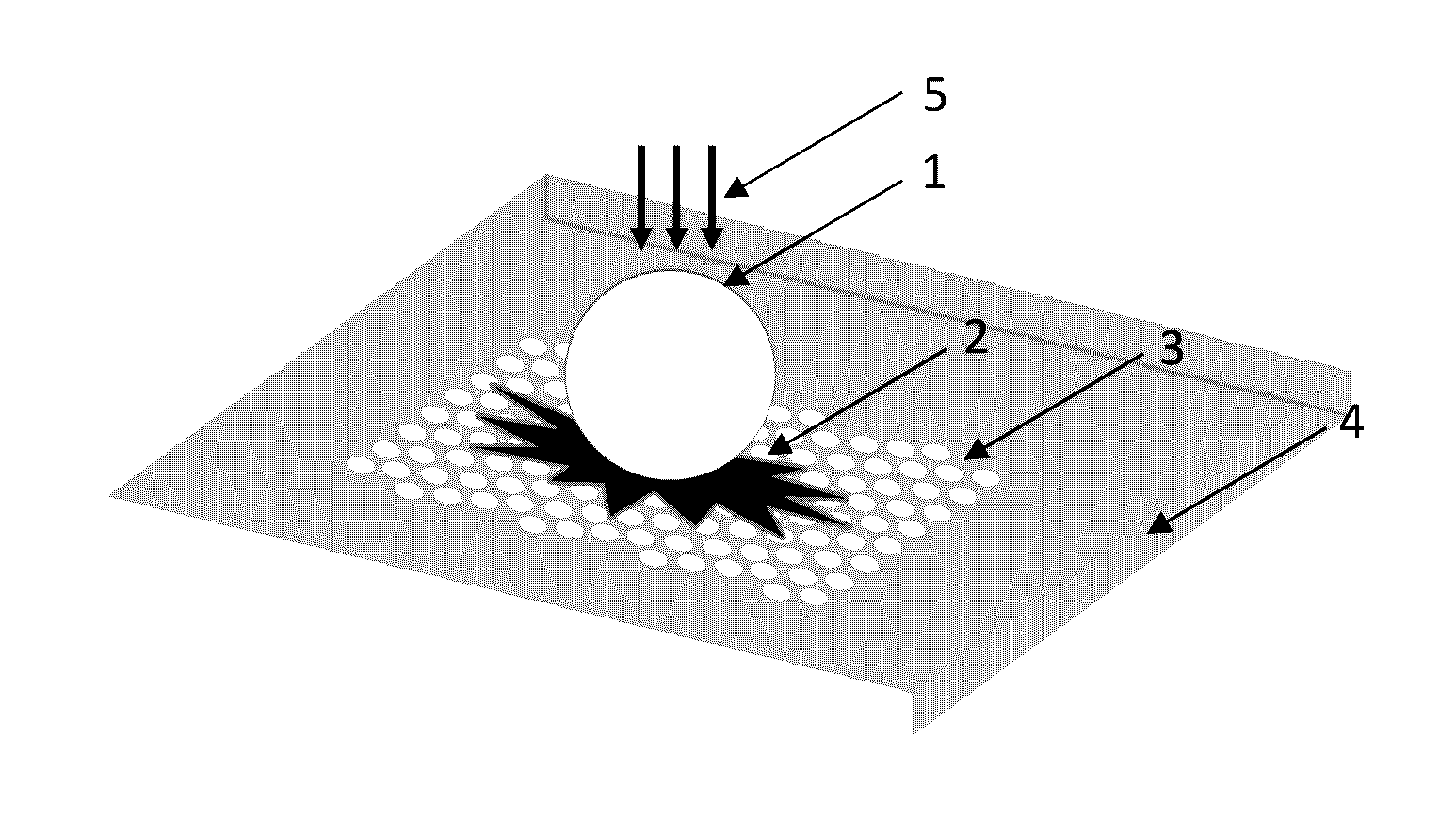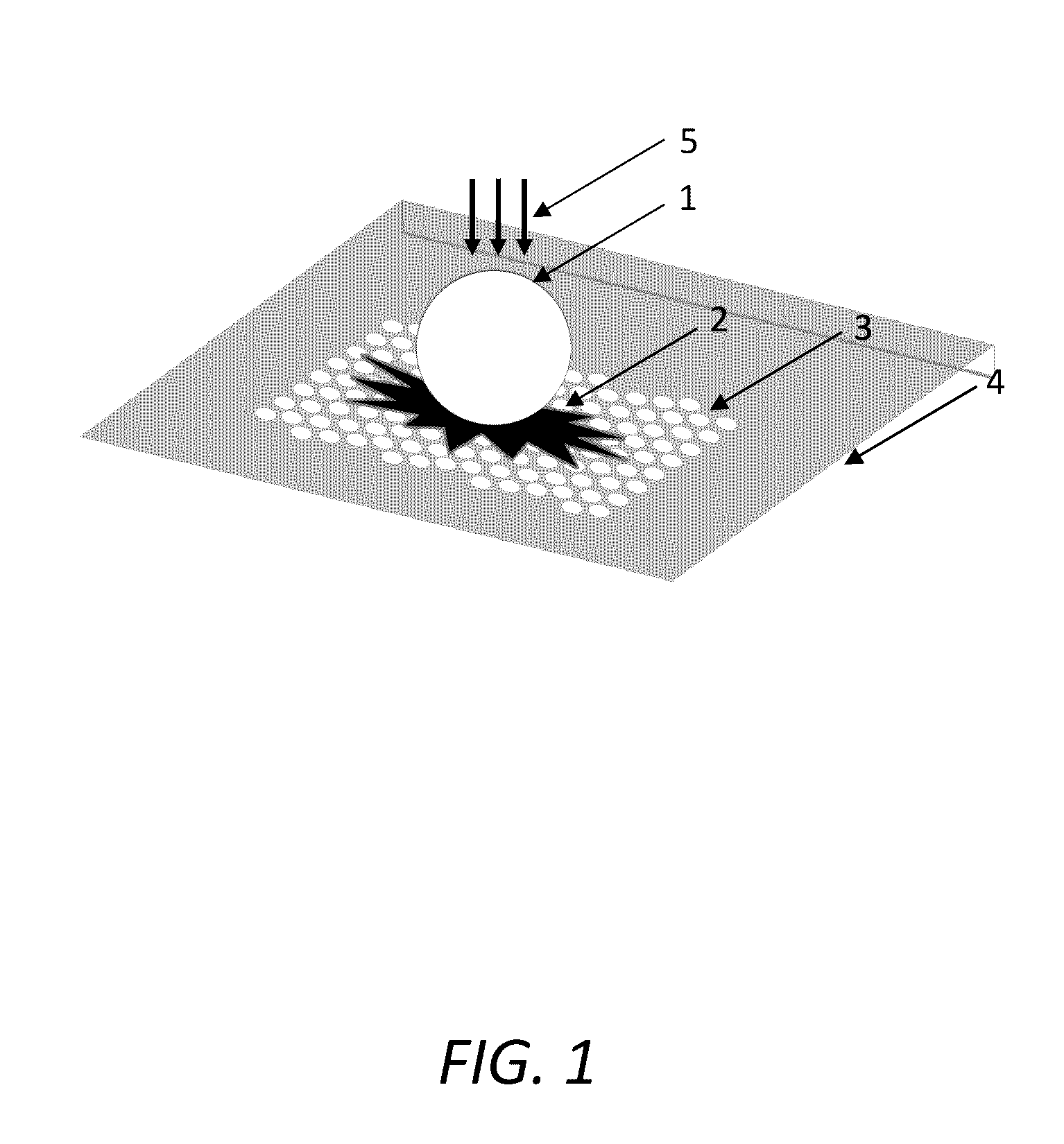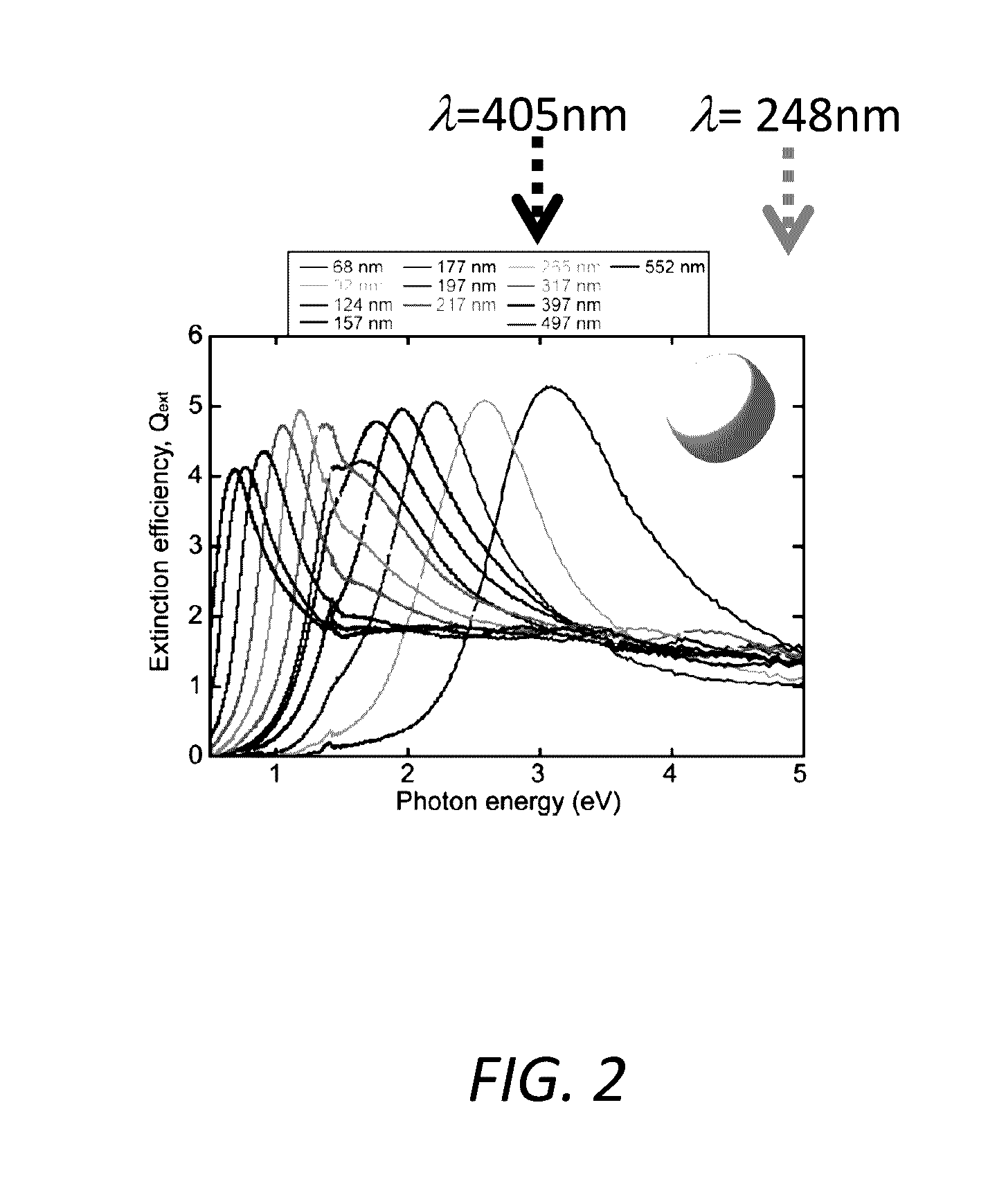Super-resolution microscopy methods and systems enhanced by dielectric microspheres or microcylinders used in combination with metallic nanostructures
a dielectric microsphere and metallic nanotechnology, applied in the field of super-resolution microscopy methods and systems, can solve the problems of diffraction-limited resolution, poor optical contrast, and label-free microscopy is more difficult than fluorescent microscopy, and achieve enhanced plasmonic near-field, improved optical contrast and resolution of ultra-small objects, and improved optical contrast and resolution.
- Summary
- Abstract
- Description
- Claims
- Application Information
AI Technical Summary
Benefits of technology
Problems solved by technology
Method used
Image
Examples
first embodiment
[0030]the proposed methods and systems is illustrated in FIG. 1. In order to project the image in the far-field we propose to use a previously developed technology of imaging through the microspheres or cylinders. (Only the case of a micro sphere is illustrated in FIG. 1). The proposed technology is expected to work for objects with the thickness limited by the wavelength of light. The microsphere or microcylinder the relatively small index of refraction (ns˜1.4-1.6) is placed above the object, so that its surface is located in near-field vicinity to the metallic nanostructure fabricated on the surface of the substrate. The object can be in a dry form or it can contain some amount of liquid, however the spheres or cylinders are not totally covered with liquid. Many biomedical and nanotechnology objects can be accommodated between the metallic nanostructure and the surface of microspheres or microcylinders. The examples include cells, viruses, proteins, carbon nanotubes, clusters of ...
second embodiment
[0032]the proposed methods and systems is illustrated in FIG. 3. It provides an additional enhancement of the resolution and quality of imaging due to use of liquid-immersed high-index (ns>1.8) microspheres or microcylinders. (Only the case of microspheres is illustrated in FIG. 3). They are totally submersed in a liquid. The height of the liquid is not critically important for the super-resolution imaging. It is particularly suitable for imaging biomedical structures since they are often water-immersed.
third embodiment
[0033]the proposed methods and systems is illustrated in FIG. 4. It provides an additional flexibility due to large number of microspheres or microcylinders with different diameters and, potentially, made from different materials, which are embedded in transparent flexible elastomeric slabs. (Only the case of microspheres is illustrated in FIG. 4). The spheres are held in nanometer-scale proximity to the bottom surface of the slabs or “coverslips”, Once the coverslip is attached to a nanoplasmonic structure, the tips of microspheres can experience the object near-fields leading to the possibility of super-resolution imaging. Each sphere has a field-of-view on the order of a quarter of its diameter. Multiple spheres allow inspecting larger area of the sample. Most importantly, the entire films can be controllably shifted along the sample providing the surface scanning functionality.
PUM
| Property | Measurement | Unit |
|---|---|---|
| diameters | aaaaa | aaaaa |
| plasmonic wavelength | aaaaa | aaaaa |
| plasmonic wavelength | aaaaa | aaaaa |
Abstract
Description
Claims
Application Information
 Login to View More
Login to View More - R&D
- Intellectual Property
- Life Sciences
- Materials
- Tech Scout
- Unparalleled Data Quality
- Higher Quality Content
- 60% Fewer Hallucinations
Browse by: Latest US Patents, China's latest patents, Technical Efficacy Thesaurus, Application Domain, Technology Topic, Popular Technical Reports.
© 2025 PatSnap. All rights reserved.Legal|Privacy policy|Modern Slavery Act Transparency Statement|Sitemap|About US| Contact US: help@patsnap.com



